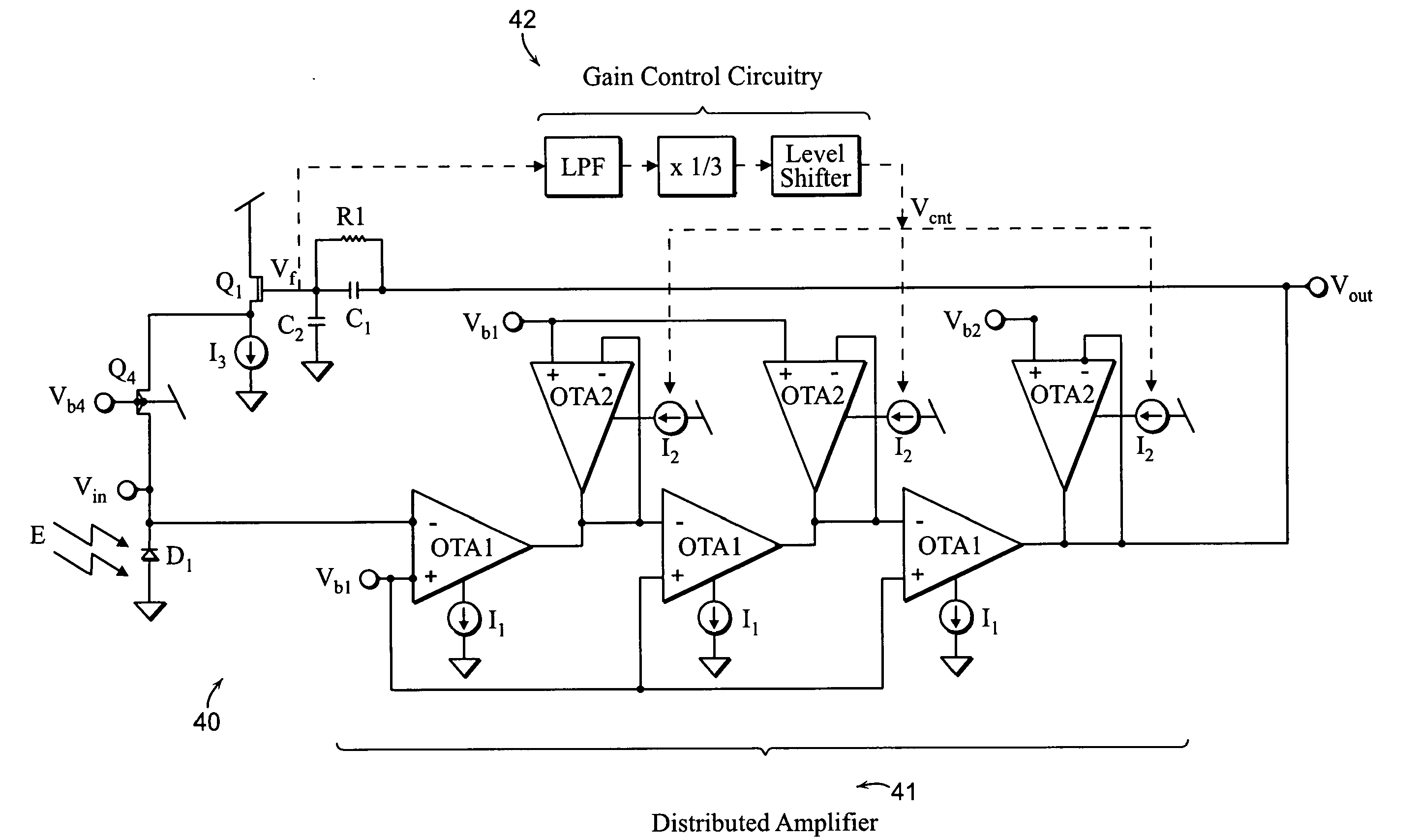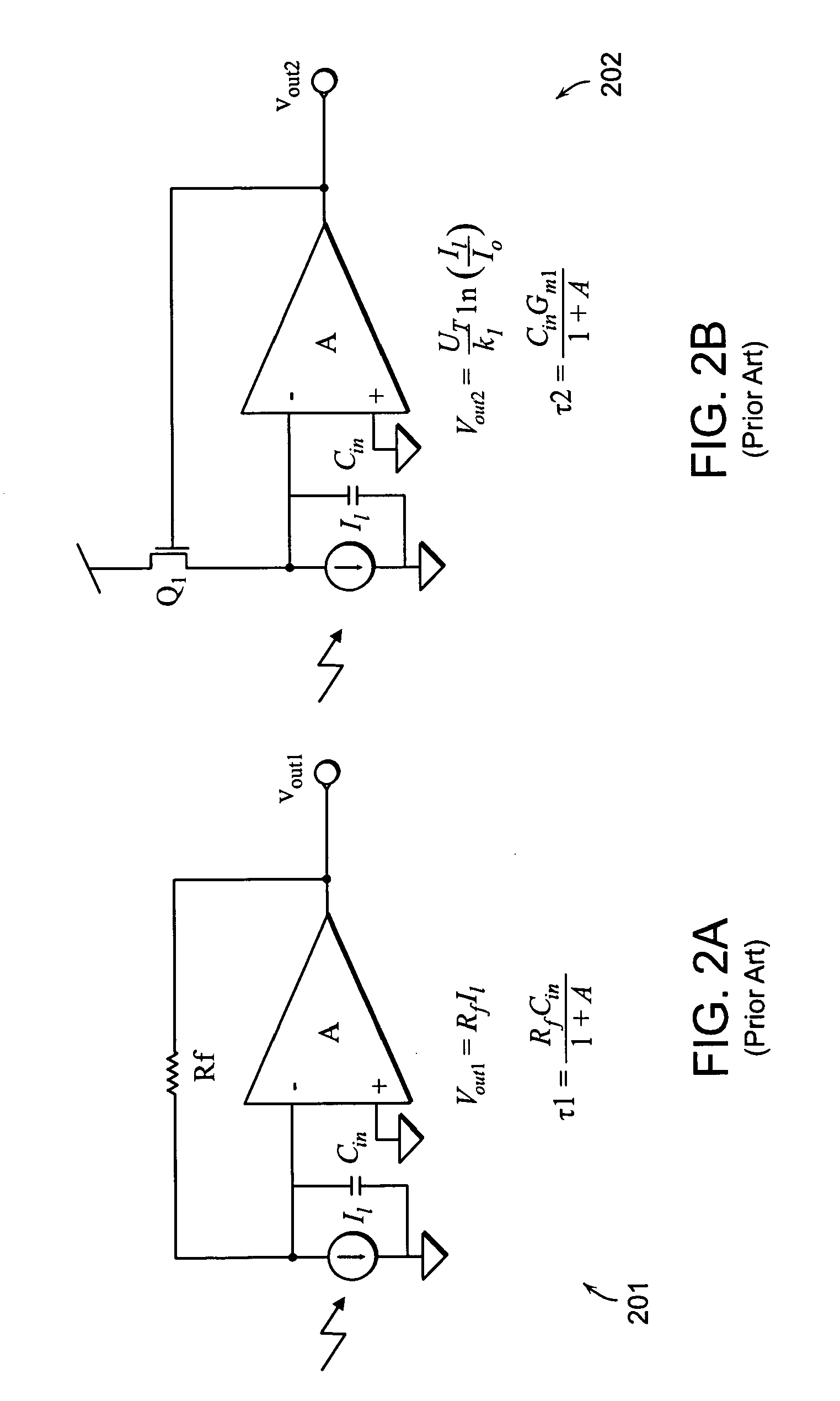Ultra-low-power pulse oximeter implemented with an energy-efficient photoreceptor
a pulse oximeter and photoreceptor technology, applied in the field of energy-efficient photoreceptors, can solve the problems of carbon monoxide poisoning, headaches, dizziness, nausea in humans, and stop breathing ability, and achieve the effects of reducing power consumption, fast, precise and ultra-low-power
- Summary
- Abstract
- Description
- Claims
- Application Information
AI Technical Summary
Benefits of technology
Problems solved by technology
Method used
Image
Examples
Embodiment Construction
I. Basic Principles of Pulse Oximetry
[0036]The basic concept underlying operation of pulse oximeters is that hemoglobin changes color from dark red to bright red when oxygenated and reduces its absorption of red light. Hence, if red LED light at 660 nm is shone through one side of a patient's finger and the transmitted light is measured on the other side of the patient's finger with a photoreceptor, the oxygen saturation, SpO2, i.e., the percentage of hemoglobin molecules that are oxygenated in the blood of the patient's finger, can be determined. However, other tissues like skin and bone which surround the arteries and veins that carry blood will affect the absolute measurement. Fortunately, arteries dilate and contract with each heartbeat such that during systole, the phase in which the ventricles of the heart contract and the blood pressure rises, relatively thicker arteries increase absorption of light. During diastole, the phase in which the ventricles of the heart relax and bl...
PUM
 Login to View More
Login to View More Abstract
Description
Claims
Application Information
 Login to View More
Login to View More - R&D
- Intellectual Property
- Life Sciences
- Materials
- Tech Scout
- Unparalleled Data Quality
- Higher Quality Content
- 60% Fewer Hallucinations
Browse by: Latest US Patents, China's latest patents, Technical Efficacy Thesaurus, Application Domain, Technology Topic, Popular Technical Reports.
© 2025 PatSnap. All rights reserved.Legal|Privacy policy|Modern Slavery Act Transparency Statement|Sitemap|About US| Contact US: help@patsnap.com



